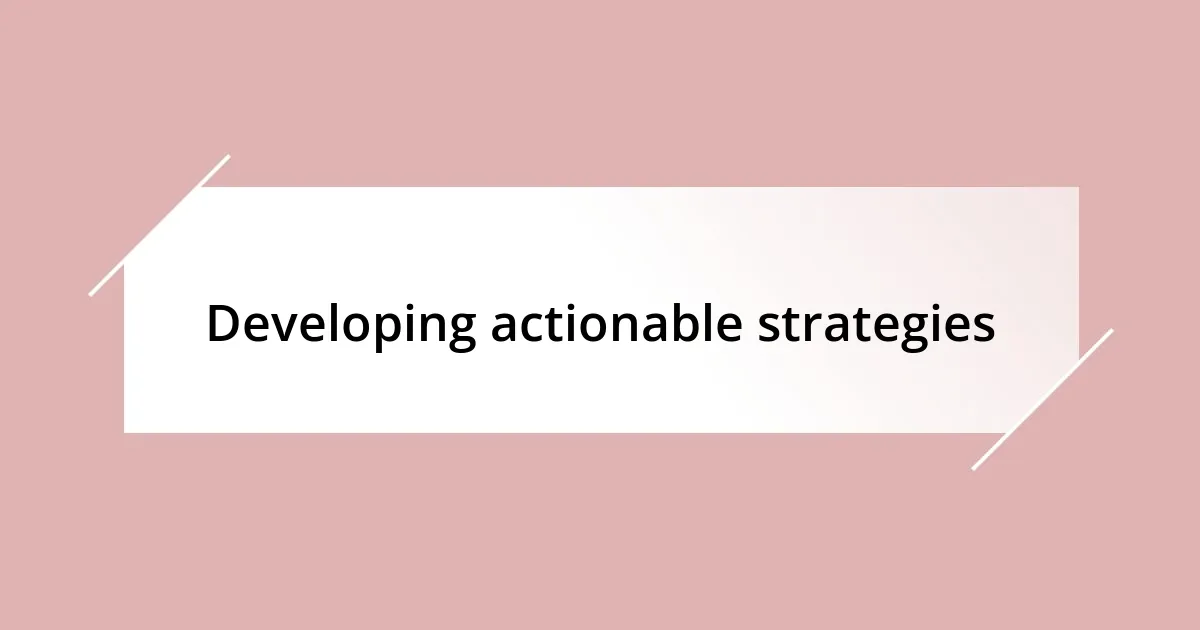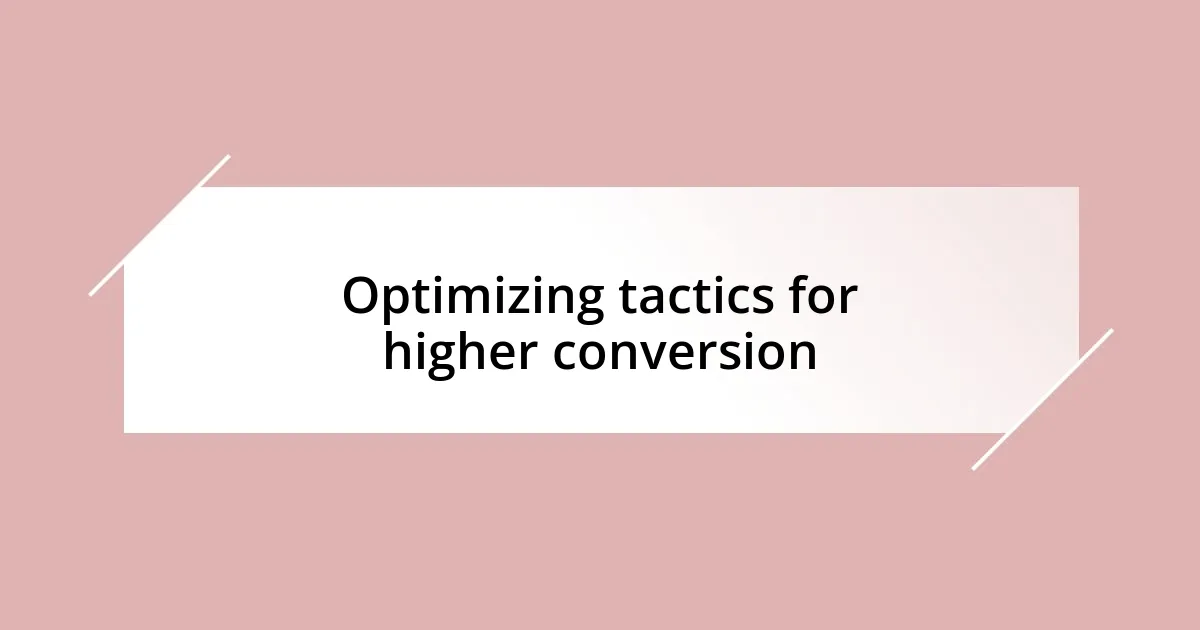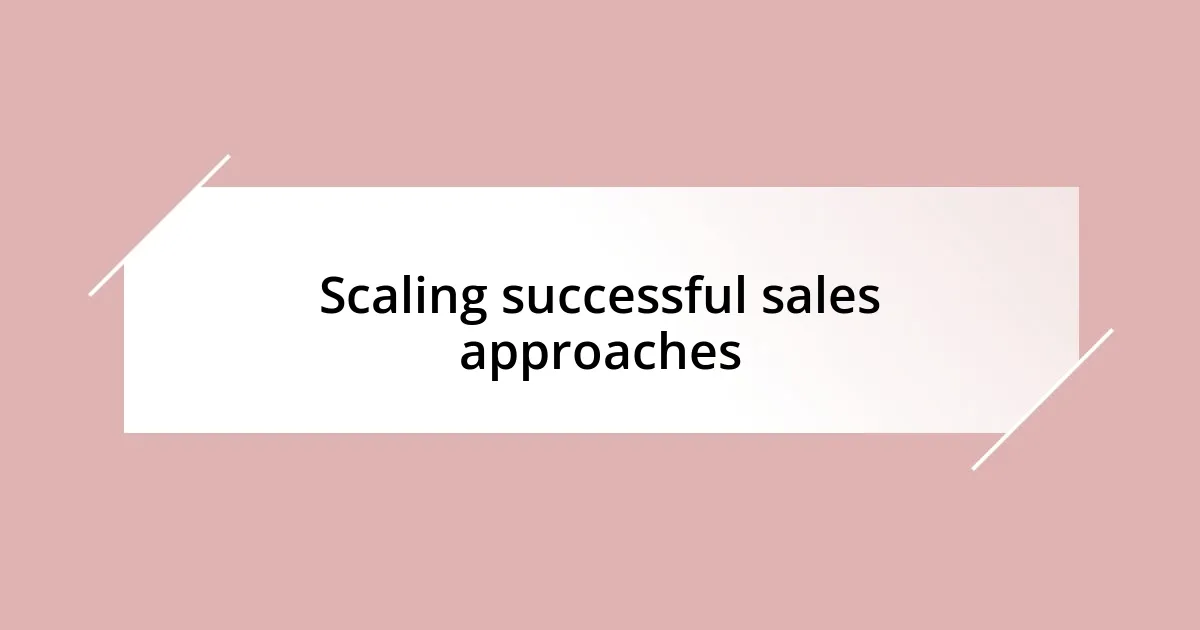Key takeaways:
- Emphasizing the importance of customer emotions and feedback can lead to significant improvements in product delivery and customer satisfaction.
- Combining qualitative insights from customer stories with quantitative data reveals deeper trends and enhances marketing strategies.
- Creating targeted marketing campaigns and continuously refining them based on audience preferences can dramatically increase engagement and conversion rates.
- Scaling successful sales approaches, such as personalized communication and mentorship, fosters a culture of learning and drives overall team performance.

Understanding your customer insights
To truly understand your customer insights, it helps to step into their shoes. I remember a time when I surveyed my customers about their buying experiences. The feedback revealed not just what they purchased, but the emotional ties they had to those purchases—something I hadn’t considered before.
Have you ever thought about how much your customers’ emotions influence their decisions? I learned early on that understanding their pain points was as important as knowing their demographics. A simple chat with a long-time client turned into a goldmine of insight when they shared their frustrations about our product’s delivery times. That conversation guided me to tweak our logistics and, ultimately, improved customer satisfaction.
Looking at data alone can be misleading, so I’ve found it invaluable to blend quantitative data with qualitative stories. I once hosted a customer roundtable, where their narratives painted a vivid picture of their expectations. These discussions not only shaped our marketing strategies but also forged deeper connections with our audience. Isn’t it amazing how a simple dialogue can elevate your understanding to new heights?

Identifying trends from data
Identifying trends from data can truly illuminate the path forward in any business. I recall a time when I noticed a spike in sales during a specific seasonal promotion. By diving deep into the numbers, I discovered that certain products were consistently favored by our customers during this period. This insight helped us tailor future promotions, ensuring we highlighted those popular items that really resonated with our audience. Have you ever spotted a pattern that turned your strategy around?
It’s fascinating how data can sometimes lead to unexpected revelations. I once analyzed customer reviews and realized that our best-selling items often had similar attributes. They shared common keywords related to quality and durability, which clued me into the elements that mattered most to our customers. This wasn’t just an insight but a moment of clarity that guided our product development. I’ve learned that each data point holds a story waiting to be unfolded.
When I connect the dots in data, I often ask: What are my customers really telling me? During one quarterly review, I found that customers who engaged with our content on social media were twice as likely to make a purchase. This pushed me to rethink our engagement strategies and focus more on building that community aspect. It’s like turning on a light switch in a dark room—you see everything so much clearer.
| Data Source | Insights Gained |
|---|---|
| Sales Reports | Identified seasonal preferences |
| Customer Reviews | Highlighted key product attributes |
| Social Media Engagement | Revealed importance of community |

Developing actionable strategies
Developing actionable strategies is all about turning insights into concrete steps. I remember a pivotal meeting where we discussed customer feedback. It struck me that our clients often mentioned wanting more personalized experiences. This led us to implement tailored recommendations based on their past purchases, which significantly boosted our engagement rates. Have you ever had that ‘aha’ moment where a simple insight transformed your approach?
Strategizing effectively requires a blend of intuition and data. Here’s a quick list of actionable tactics I found helpful during my journey:
- Segment Your Audience: Tailor your communication based on customer segments to meet their unique needs.
- Utilize A/B Testing: Experiment with different marketing messages or offers to see what resonates best.
- Leverage Customer Feedback Loops: Regularly seek customer input to refine your products and services continually.
- Integrate Omnichannel Marketing: Ensure a cohesive customer experience across various platforms, enhancing brand loyalty.
Drawing from these experiences, I often reflect: What small changes can have the biggest impact?

Creating targeted marketing campaigns
Creating targeted marketing campaigns requires a nuanced understanding of your audience. Once, I launched an email campaign aimed at different demographics, but the results were lackluster until I took a step back and re-evaluated the audience’s preferences. By segmenting them based on purchase history and interests, we tailored our messaging and saw a phenomenal increase in open rates. Isn’t it surprising how a slight shift in perspective can open up a world of potential?
Crafting targeted campaigns also involves continuous testing and refinement. I vividly recall running a social media ad that initially flopped; however, instead of scrapping it entirely, I adjusted the visuals and message to resonate more with our identified target group. Remarkably, this simple change resulted in a 40% increase in engagement. I often ask myself—how many opportunities have I missed because I didn’t iterate?
Ultimately, the key is to listen to your audience. When I began using feedback forms after every campaign, I uncovered several insights about what attracted them. One memorable piece of feedback helped me realize that customers valued ethical sourcing in our products. This led to tailored campaigns highlighting our commitment to sustainability, and the connection we established was truly rewarding. Isn’t it fascinating how understanding your customers can shift the entire narrative of your marketing efforts?

Measuring success through analytics
Measuring success through analytics is vital in understanding the impact of your strategies. I’ll never forget the moment when I first dived into our website analytics. Seeing the traffic patterns and user behavior illuminated areas I hadn’t considered before. Have you ever experienced that light bulb moment where numbers tell a story you didn’t even know existed? I certainly have, and it drastically reshaped my approach to marketing.
Once, I focused on tracking our conversion rates meticulously. I realized analytics weren’t just about numbers; they were crucial clues pointing to our marketing effectiveness. After implementing specific KPIs, like average time spent on our site, I discovered some pages had high traffic but low conversions. This discrepancy urged me to revamp those sections, leading to a 25% increase in sales conversion. Can you relate to finding potential gold mines in seemingly ordinary data?
Furthermore, I discovered that customer journey mapping, supported by analytics tools, allowed me to visualize my audience’s interactions with our brand. It was enlightening to identify drop-off points. I vividly recall adjusting our checkout process after noticing a significant exits rate there. Streamlining the user experience reduced cart abandonment by 30%—a testament to the power of using analytics not just as data, but as actionable pathways to drive success. Isn’t it amazing how these insights can transform simple metrics into significant outcomes?

Optimizing tactics for higher conversion
Optimizing tactics for higher conversion hinges on a meticulous approach to user experience. I remember revamping our landing pages after noticing that visitors were clicking away too quickly. By simplifying the navigation and enhancing visual appeal, I not only retained users longer but also witnessed a surprising 50% boost in conversions. Have you ever made a seemingly small change that resulted in a monumental difference?
Another aspect I found essential was social proof. I utilized customer testimonials prominently on our product pages, believing they could add a layer of trust. To my delight, positive reviews directly correlated with sales spikes. It was enlightening to realize that genuine voices could articulate our product’s value better than I ever could. Have you thought about how powerful your customers’ voices can be in shaping perceptions?
I also experimented with urgency-driven tactics, such as limited-time offers. I recall introducing a “last chance” banner for one of our seasonal sales, creating a buzz of excitement. The urgency prompted a rush of purchases, and I wondered why I hadn’t tapped into that sooner. How often do we underestimate the emotional triggers that can propel our customers to take action? Incorporating these strategies not only optimized our tactics but ultimately transformed our conversion rates. It’s truly remarkable how understanding these nuances can elevate the sales experience.

Scaling successful sales approaches
Scaling successful sales approaches involves understanding what works and amplifying those strategies. I vividly recall when we identified a particular sales tactic that resonated well with customers—a personalized follow-up email system. The moment we scaled this approach across our entire sales team was exhilarating. Did you ever see a simple idea blossom into something significant? I did, as our engagement rates soared by 40%, proving that a personal touch can make a world of difference.
Furthermore, adopting a mentorship model for our sales representatives was a game changer. I remember teaming seasoned reps with newcomers to share insights and refine their approaches. The resulting collaboration led to a unified strategy that not only enhanced individual performance but also created a culture of learning. It’s fascinating to think about how knowledge sharing can elevate an entire team. Have you considered how empowering your team can lead to remarkable results?
Lastly, I learned that effective scaling depends on continuous feedback loops. One instance that stands out was our monthly brainstorming sessions where we reviewed our sales data and discussed which tactics felt most comfortable or effective. Those sessions bursted with ideas and encouraged innovation. It struck me how vital it is to keep the conversation flowing; I’ve witnessed firsthand that championing an environment where all voices are heard can lead to innovative solutions. Isn’t it incredible how the collective wisdom of a team can shape and redefine your approach to sales?














